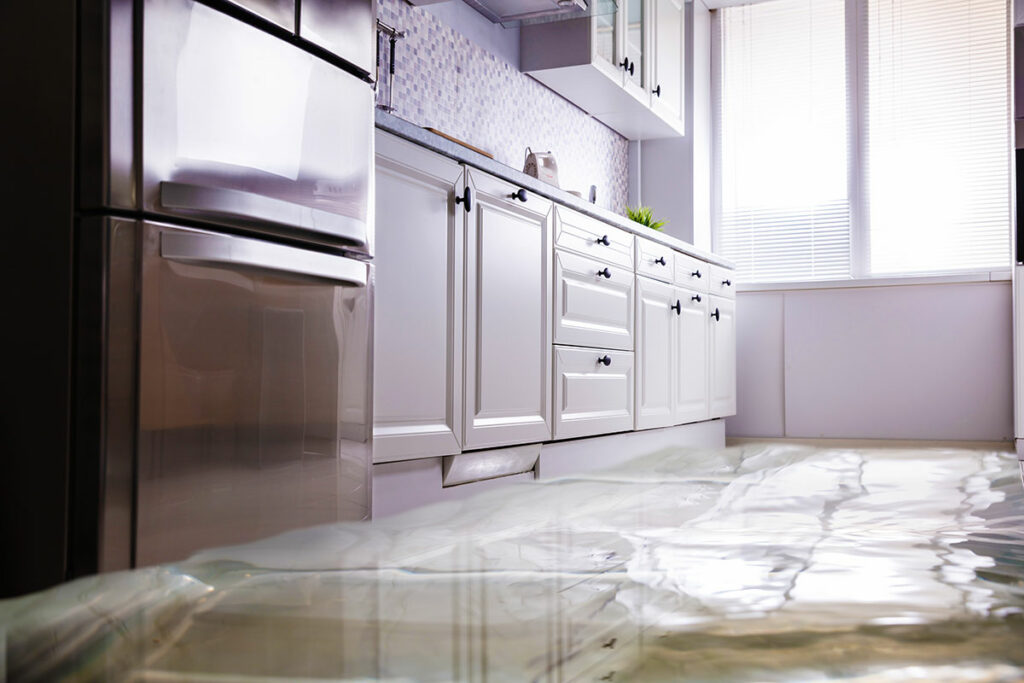Mobile home water damage is a common problem and can quickly cause significant damage and come with big out-of-pocket expenses. It’s important to take the necessary steps to minimize water damage in your mobile home, and in the event of an emergency, you should know how to respond quickly and effectively. In this article, we’ll provide you with some emergency tips to minimize water damage in your mobile home.
Mobile Home Water Damage Action Plan
If you experience severe, sudden, and/or accidental water damage to your mobile home, take the following precautions until help arrives:
1) Locate the source of the leak
The first step in minimizing mobile home water damage is to locate the source of the leak. This could be a leaky faucet, a burst pipe, or a malfunctioning appliance. If you’re not sure where the leak is coming from, turn off the main water supply to your home and inspect all the pipes and fixtures to see if the water is still flowing. Once you’ve located the source of the leak, turn off the water supply to that area and proceed to step 2.
2) Shut off the water source if possible.
Once you’ve located the source of the leak, if it is possible, turn off the water source in that area. This will help prevent any further water from flowing into your home and causing additional damage. If you are unable to isolate the shut-off for the area, you should consider utilizing the shut-off for the entire home.
3) Turn off the electricity
If water has come into contact with electrical outlets or appliances, turn off the electricity in the affected area immediately. This will prevent the risk of electrical shock and reduce the chance of further damage.
4) Remove standing water
If there is standing water in your home, you need to remove it as soon as possible. This can be done with a wet/dry vacuum or by mopping up the water with towels or other absorbent materials. Be sure to remove as much water as possible to reduce the chance of further damage. Mop and blot up or wet vac as much water as possible. Pull back the drenched carpet to dry out the subfloor underneath. Make small holes in sagging ceilings or belly to get rid of trapped water. Place a container underneath a ceiling to catch the run-off. Never turn on ceiling fixtures if the ceiling is wet. Do not use your household vacuum to remove water, and don’t use other appliances while standing on wet carpets or floors to avoid hazards of electrical shock.
5) Try to protect your property from further damage.
Perform temporary, reasonable, and necessary repairs. For example, cover openings in the roof or walls with plywood or plastic. Move household items and valuables to an undamaged area, or cover them with plastic. in the affected areas. Remove oriental or other colored throw rugs. Don’t leave books, magazines, wet fabric, or other colored items on wet carpeting. Prop up wet cushions for even drying. Place wood blocks, wax paper, or aluminum foil between furniture legs and wet carpeting to prevent damage to the furniture. Wipe excess water from wood furniture and open drawers and cabinet doors to aid in faster drying.
6) Setup fans and dehumidifiers
Once you’ve removed the standing water, use fans and dehumidifiers to help dry out the affected area. Place the fans in such a way that they’re blowing air across the affected area and into another room, and run the dehumidifier continuously until the affected area is completely dry.
7) Inspect for damage
Once the affected area is dry inspect it for damage. Check for water damage to walls, floors, and ceilings, and look for any signs of mold growth. If there is significant damage or mold growth, you should call a professional for assistance.
8) Make any needed repairs
Once dry and inspected, it’s time to make any necessary repairs. If you have water damage to walls, floors, or ceilings, it may be necessary to repair or replace the damaged materials. You may also need to replace any electrical outlets or appliances that were affected by the water. When making repairs, it’s important to use materials that are appropriate for a mobile home. For example, if you’re repairing walls, use wall panels that are designed for use in a mobile home and are suitable for the specific type of construction. It’s also important to make any necessary repairs in a timely manner. This will help to prevent any further damage and reduce the cost of repairs in the long run. If the repairs are extensive, you might also consider contacting your mobile home insurance company.
9) Take preventive measures
To minimize the risk of water damage in the future, take some preventive measures. Install water detectors in your home to alert you to any leaks, and regularly inspect your pipes and fixtures for signs of wear and tear. You should also turn off the main water supply to your home when you’re going away for an extended period of time.
Final Thoughts
Water damage can quickly cause significant damage in a mobile home, but with these emergency tips, you can minimize the damage and get your home back to normal as quickly as possible. Remember, the most important thing is to act quickly and respond effectively to minimize the damage and reduce the cost of repairs.

